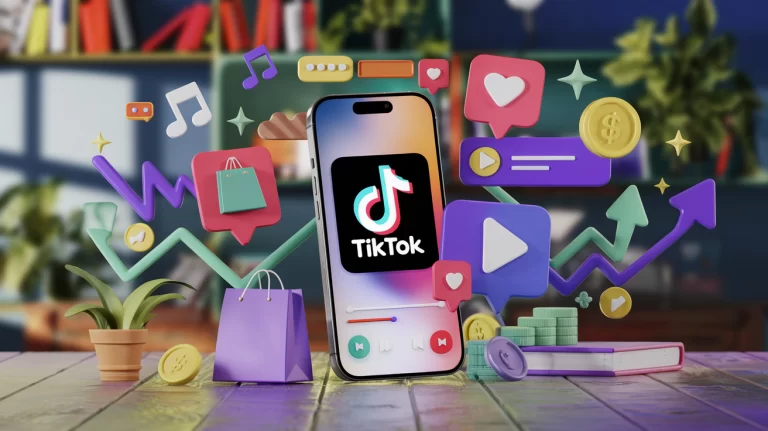Objective:
This checklist guides e-commerce businesses in developing and implementing a compelling brand storytelling strategy. By following these steps, you’ll create a narrative that resonates with your target audience, differentiates your brand, and drives customer engagement and loyalty in the competitive online retail space, ultimately boosting sales and customer retention.
I. Brand Story Foundation
Define Your Brand’s Core Elements
- Craft your brand’s mission statement: Create a concise statement that captures your brand’s purpose and goals.
Example: “To revolutionize online shopping by offering sustainable, ethically-sourced products that empower consumers to make environmentally responsible choices.” - Identify your brand’s purpose: Clarify why your e-commerce business exists beyond making profits.
Tip: Align your purpose with broader societal or environmental issues to create deeper connections with customers. - Articulate your brand values: List 3-5 core values that guide your business decisions and operations.
Note: Ensure these values are reflected in your product selection, customer service, and overall business practices. - Develop your brand personality: Define the human characteristics and tone of voice that represent your brand.
Example: “Eco-friendly, innovative, approachable, and empowering.”
Understand Your Audience
- Develop detailed buyer personas: Create 2-3 fictional representations of your ideal customers.
Tip: Use data from your CRM, social media analytics, and customer surveys to inform these personas. - Map out your customer’s journey: Identify key touchpoints where your brand story can make an impact.
Note: Include both digital (website, email, social media) and potential physical touchpoints (packaging, inserts). - Conduct customer interviews: Gather qualitative data to understand customer motivations and pain points.
Example: Use video calls or in-person meetups to dive deep into customer experiences and expectations.
II. Narrative Development
Craft Your Brand’s Origin Story
- Document your founding story: Detail the events and motivations that led to your e-commerce business’s creation.
Tip: Highlight personal experiences or challenges that inspired the business to create an emotional connection. - Identify key milestones: Highlight significant achievements or turning points in your brand’s history.
Example: “Reaching 100% sustainable packaging” or “Launching our first community-driven product line.” - Create a brand timeline: Visualize your brand’s journey from inception to present day.
Note: Use this timeline in your “About Us” page and marketing materials to showcase growth and evolution.
Define Your Brand’s Unique Selling Proposition (USP)
- Articulate what sets you apart: Identify the unique aspects of your products or service that differentiate you from competitors.
Example: “Our AI-powered size recommendation technology ensures a perfect fit, reducing returns by 50%.” - Frame your USP within your brand story: Explain how your unique offerings tie into your brand’s larger narrative.
Tip: Use storytelling techniques like conflict and resolution to make your USP more compelling. - Validate your USP: Conduct competitor analysis and customer surveys to ensure your USP is truly unique and valuable.
Note: Regularly reassess your USP to maintain relevance in the fast-paced e-commerce landscape.
III. Content Creation and Distribution
Develop a Content Strategy
- Create a content calendar: Plan out storytelling content across various channels and formats.
Example: Include product launches, behind-the-scenes content, customer spotlights, and seasonal campaigns. - Identify key storytelling formats: Choose formats that resonate with your audience and showcase your products effectively.
Tip: Experiment with emerging formats like short-form videos, interactive polls, or augmented reality experiences. - Develop a brand style guide: Ensure consistency in visual and written storytelling across all platforms.
Note: Include guidelines for tone of voice, imagery style, color palette, and typography.
Leverage Multiple Channels
- Optimize your e-commerce website for storytelling: Integrate narrative elements throughout your site, from the homepage to product pages.
Example: Use scrollytelling techniques to reveal your brand story as users navigate your site. - Utilize social media platforms: Choose platforms where your target audience is most active and tailor your story for each.
Tip: Use Instagram and TikTok for visual storytelling, Twitter for customer engagement, and YouTube for in-depth brand videos. - Implement email marketing campaigns: Develop a series of emails that unfold your brand story over time.
Note: Segment your email list to deliver personalized story elements based on customer preferences and behaviors. - Explore emerging platforms: Stay ahead by storytelling on new platforms relevant to your audience.
Example: Utilize audio platforms like Clubhouse or Spotify’s podcast feature for intimate brand storytelling.
IV. Customer Engagement and User-Generated Content
Encourage Customer Storytelling
- Create a branded hashtag: Develop a unique hashtag for customers to share their experiences with your products.
Tip: Make the hashtag prominent across all touchpoints and incentivize its use through contests or features. - Implement a customer review strategy: Actively solicit and showcase customer reviews that highlight your brand story.
Example: Use video testimonials to bring customer stories to life and showcase product use cases. - Develop a brand ambassador program: Identify and nurture relationships with customers who embody your brand values.
Note: Provide ambassadors with exclusive products, behind-the-scenes access, and opportunities to influence product development.
Foster a Community Around Your Brand
- Develop a loyalty program: Create a program that rewards customers for engaging with your brand story.
Tip: Offer tiered rewards that unlock unique brand experiences or limited-edition products. - Host virtual events: Organize online events that bring your brand story to life and engage your community.
Example: Host live Q&A sessions with your founder, virtual product launches, or online workshops related to your brand values. - Create a branded online community: Develop a space for customers to connect with each other and your brand.
Note: This could be a forum on your website, a private Facebook group, or a Discord server, depending on your audience preferences.
Key Performance Indicators (KPIs)
- Brand sentiment: Measure the overall perception of your brand through social listening tools and surveys.
Target: Aim for a positive sentiment score of 80% or higher. - Engagement rate: Measure likes, comments, shares, and click-throughs on storytelling content.
Note: Benchmark against industry standards and your own historical data to set realistic targets. - Customer Lifetime Value (CLV): Track how your brand storytelling impacts long-term customer value.
Target: Seek a 20% increase in CLV for customers exposed to your brand storytelling initiatives. - Conversion rate: Monitor how storytelling elements impact your e-commerce conversion rate.
Tip: Use A/B testing to compare pages with and without storytelling elements to measure direct impact. - User-generated content volume: Track the amount of customer-created content related to your brand story.
Example: Aim for a 10% month-over-month increase in UGC using your branded hashtag.
Tools and Resources
- Shopify: E-commerce platform with built-in features for storytelling and customer engagement.
Use case: Utilize Shopify’s blog feature to share your brand story and product narratives. - Hootsuite: Social media management platform for scheduling and analyzing storytelling content.
Tip: Use its analytics features to track engagement with your brand story across platforms and optimize posting times. - Yotpo: Customer content marketing platform for collecting and showcasing user-generated content.
Note: Integrate Yotpo with your e-commerce platform to automatically display customer photos and reviews on product pages. - Typeform: Interactive form builder for creating engaging surveys and quizzes.
Example: Create a “Find Your Perfect Product” quiz that incorporates elements of your brand story. - Canva: User-friendly design tool for creating visually appealing storytelling content.
Use case: Design consistent, on-brand graphics for social media posts, email headers, and website banners.
Common Pitfalls and How to Avoid Them
- Inconsistent messaging: Ensure all team members are aligned on your brand story and values.
Tip: Develop a comprehensive brand storytelling playbook and conduct regular training sessions for all departments. - Overcomplicating the narrative: Keep your brand story simple, relatable, and easily digestible.
Note: Use the “elevator pitch” technique to distill your story into a compelling 30-second version. - Neglecting to update the story: Regularly revisit and refresh your brand narrative to reflect growth and changes.
Example: Conduct quarterly reviews of your brand story, incorporating new milestones, customer feedback, and market trends. - Focusing too much on selling: Balance promotional content with authentic storytelling.
Tip: Follow the 80/20 rule: 80% value-driven storytelling, 20% direct promotion. - Ignoring negative feedback: Address negative comments or reviews promptly and constructively.
Note: View criticism as an opportunity to demonstrate your brand values and commitment to customer satisfaction.
Best Practices and Pro Tips
- Embrace authenticity: Share both successes and challenges in your brand story to build trust.
Example: Create a “Lessons Learned” blog series where you openly discuss mistakes and how they’ve shaped your brand. - Use data to inform storytelling: Analyze customer data to identify themes and preferences that can enhance your narrative.
Tip: Use AI-powered analytics tools to uncover insights from customer interactions and feedback. - Incorporate sensory elements: Use rich imagery, videos, and even sound to bring your e-commerce brand story to life.
Note: Consider developing a brand “soundtrack” or signature scent for physical touchpoints to create a multi-sensory brand experience. - Leverage influencer partnerships: Collaborate with influencers whose values align with your brand to amplify your story.
Example: Co-create limited edition products with influencers that embody your brand values and appeal to your target audience. - Implement interactive storytelling elements: Use quizzes, configurators, or AR experiences to make your story engaging.
Tip: Develop an AR app that allows customers to visualize your products in their own space while learning about their origin and impact. - Personalize the brand story experience: Use customer data to tailor storytelling elements to individual preferences.
Note: Implement dynamic website content that adjusts based on user behavior and preferences.
Conclusion
Implementing this refined brand storytelling strategy checklist for your e-commerce business should take approximately 4-8 months for initial development and implementation, with ongoing refinement and optimization. To get started immediately, begin by revisiting your brand’s core elements and ensuring they align with your current business goals and market position. As you progress, prioritize authenticity, consistency, and customer engagement in your storytelling efforts. Remember to regularly analyze performance data and gather customer feedback to continuously improve your strategy. Don’t hesitate to consult with marketing experts, professional storytellers, or UX designers when faced with complex challenges in bringing your brand narrative to life in the dynamic e-commerce space. By committing to a strong brand storytelling approach, you’ll create a more engaging, memorable, and profitable e-commerce presence.









